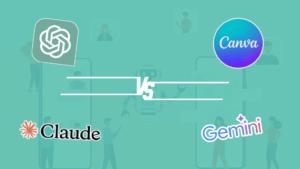One of the most effective digital marketing and advertising platforms is Facebook, but it can be difficult to comprehend how it operates.
Facebook has grown more complicated, making it challenging to understand exactly how your campaigns succeed with its astonishing assortment of attribution models and algorithms.
To help you choose your advertising strategy more wisely, we’ll examine the various Facebook attribution models in this post and explain how they operate. By comprehending these models, you may increase the ROI of your Facebook advertising (ROI).

What is a Facebook Attribution?
Facebook attribution is the process of attributing credit to a specific ad campaign or landing page based on how it impacts conversions. For example, you can use Facebook attribution to determine which campaigns drive the most sales, sign-ups, and your audience’s desired actions.
It’s important to note that different types of attributed actions may require different attributions. For example, a purchase would require a longer attribution window than a page view or an impression.
Moreover, with Facebook Attribution, you can effortlessly contrast the performance of your advertisements and landing pages to make sure that your marketing initiatives meet their maximum potential.
By leveraging this tool, you can optimize your content to enhance ROI (Return on Investment) for all campaigns. As an example, through comparison and analysis of varied landing pages across various platforms such as desktop computers, mobiles devices, or Instagram, the best-performing ad will be identified.
With Facebook Attribution, you can track where your most profitable customers come from and how they initially discovered your product or service. This helps you gain a better understanding of customer patterns so that you will be able to construct more effective marketing campaigns in the future.
In the end, Facebook Attribution is a powerful resource that can be used to maximize the efficiency of your marketing plans and measure their success. For any online business aiming for maximum ROI gains, it’s an invaluable asset.
The Various Facebook Attribution Models
Credit for conversions is given using a number of models by Facebook Attribution. They consist of the following:
1. Last-click attribution: In this model, the final ad that was clicked before a conversion is given the highest weight. The majority of digital marketers and advertising employ this technique.
2. First-click attribution: This model awards credit to the first ad clicked prior to a conversion, which is the exact opposite of the last-click model.
3. Linear attribution: This method assigns equal credit to all advertisements and consumer interactions that occur before a sale.
4. Time decay attribution: Under this model, the most recent ad clicks are given more weight than those that occurred earlier in the customer’s journey.
5. Position-based attribution: As the name suggests, this approach gives the first and last touchpoints a combined 40% credit. The remaining 20% of the credit is then distributed among any additional clicks or impressions that may have taken place before the conversion.
6. Bespoke attribution: With this method, you may assign unique weights to various user journey phases. This might show any focus you might wish to provide to particular touchpoints or advertisements.
Marketers and advertisers can have a better understanding of which strategies are effective and which may require some adjustment by utilizing these models.
Additionally, they can accurately analyze ROI across all of their initiatives thanks to Facebook Attribution. Hence, they may make data-driven judgments that will help them maximize their tactics.
How Do the Models Work?
When you set up a campaign in Facebook Attribution, the platform automatically assigns credit to each touchpoint before the conversion. It does this by considering factors such as user behavior and device type. This ensures that all users are given an equal opportunity regarding attribution.
For example, if someone clicks on an ad from their mobile device but then purchases on their laptop or desktop computer, the last-click model would only give credit to the click from the mobile device. However, with linear attribution, both devices would be credited for the same conversion value.
This helps marketers get a fuller picture of how their campaigns perform across different channels and devices to make more informed decisions.
Ultimately, Facebook Attribution gives marketers a more holistic view of their campaigns and enables them to make better-informed decisions that will help improve their ROI.
Factors to Consider when Choosing a Model
When choosing a model for your campaigns, several factors must be considered. These include:
The objectives of the campaign: Different models may be better suited depending on what type of goals you’re trying to achieve. For example, if you want to reward loyalty and emphasize repeat customers, then time decay attribution might be the right choice.
Your marketing channels: Different channels may require different attribution models to measure their performance accurately. For example, Instagram campaigns could benefit from linear or position-based attribution models instead of a last-click approach.
Your budget: Prior to making a purchase, it is important to review the cost of your desired model and assess the resources required for effective implementation. By examining your budget initially, you can save yourself time, energy, and money since prices may vary greatly from one product to another.
Your data: When selecting a data analysis model, ensure that it is capable of handling your specific sources and the metrics you want to measure. Choosing an appropriate model will optimize results while also making sure they are accurate.
Your team: Varying models necessitate varying levels of experience and resources to be implemented successfully, so ensure that you have the right person on board with the aptitude required to get it done properly.
Your customer journey: To accurately determine the attribution model that works best for your business, it is critical to understand customer behavior and their journey with your brand. By examining both of these aspects, you can then pinpoint the ideal tracking system which will fulfill all of your requirements.
Your industry: Prior to deciding which attribution model is most suitable for your industry, make certain that you understand its specific needs. Every sector has distinctive requirements when it comes to attribution models, so take the time to familiarize yourself with them.
Your competitors: It’s crucial to recognize the models your competition is leveraging in order to maintain a competitive edge. This information can also provide you with helpful insight into which model could possibly be most beneficial for your company.
Making the right decision on an attribution model is pivotal, as it will affect how you track and improve campaigns from this point forward.
The Final Step: Implementing the Models
Once you have chosen the model or models that best suit your business goals, it’s time to implement them.
To do so, you will need to set up an attribution window in Facebook Attribution – this is the period of time between which you want to measure conversions (e.g., one week).
You then select the attribution model(s) you want to apply and configure any custom rules relevant to your campaigns (such as using different weights for certain channels/devices).
Finally, you will need to set up your conversion tracking. This involves placing a small piece of code on the website or app you want to track conversions for so that Facebook can record them.
Once all of this is configured, you can start attributing conversions using the chosen models and analyzing the results. Over time, you should be able to see how effective different marketing approaches are at driving conversion events – and improve your campaigns accordingly.
With proper attribution in place, you can ensure that each dollar of ad spend gets maximum value from your campaigns and helps bring in more conversions for your business.
The Short
Choosing the right attribution model for your business depends on various factors, including a budget, customer journey, data types, and industry.
Once you have chosen the model or models that best suit your goals, you should set up an attribution window in Facebook Attribution and configure any custom rules. Finally, you must set up conversion tracking by placing a small piece of code on the website or app that you want to track conversions.
With proper setup and analysis of results over time, attribution can help ensure maximum value from each dollar of ad spend.
For more help choosing an attribution model, contact an experienced digital marketing agency like ours! We can provide insights into which model may be most appropriate for you – enabling you to get the best results from your campaigns.
About The Author
Khalid Essam
Khalid is the Chief of Staff at AOK. He collaborates with a team of specialists to develop and implement successful digital campaigns, ensuring strategic alignment and optimal results. With strong leadership skills and a passion for innovation, Khalid drives AOK’s success by staying ahead of industry trends and fostering strong client and team relationships.





